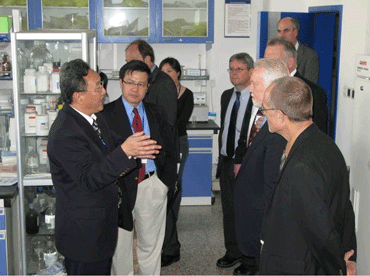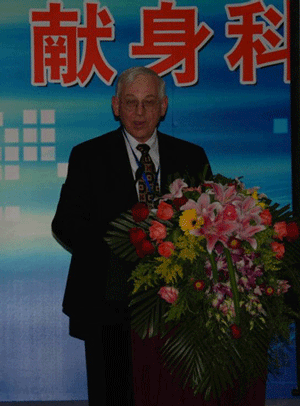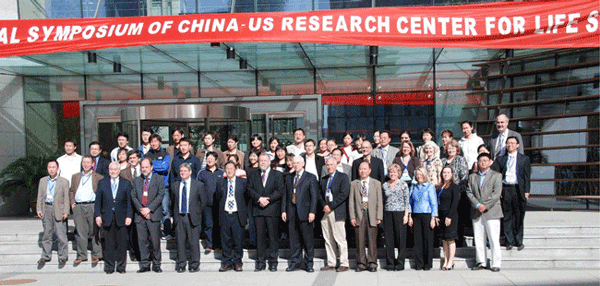 |
Scientists tour research laboratories at the Chinese Academy of Science. |
Although on a much different scale, it also has been a historic year for the Chinese Academy of Sciences.
The academy, located only a few blocks from the site of the Summer Olympics, partnered with UNMC to launch its First Symposium of the China-U.S. Research Center for Life Sciences on Wednesday.
Seven U.S. scientists and six Chinese scientists made presentations at the symposium, which focused on neuroscience and immunology.
Four of the U.S. presenters were UNMC faculty. They included: Rod Markin, M.D., Ph.D., president and CEO, UNMC Physicians; Dan Monaghan, Ph.D., professor, pharmacology and experimental neuroscience; Kai Fu, M.D., Ph.D., assistant professor, pathology and microbiology; and Jialin Zheng, M.D., professor, pharmacology and experimental neuroscience.
Two scientists from the National Institutes of Health, National Institute of Neurological Disorders and Stroke — Eugene Major, Ph.D., chief of the Laboratory of Molecular Medicine and Neuroscience, and Steve Jacobson, Ph.D., chief of the viral immunology section — also presented. The other U.S. presenter was Sean Murphy, Ph.D., professor, department of neurological surgery, University of Washington School of Medicine.
All six of the Chinese presenters gave their talks in English. Five of the presenters were from the Chinese Academy of Science.
The symposium will continue in future years, as the partnership continues to flourish, said Don Leuenberger, vice chancellor for business and finance at UNMC.
 |
Don Leuenberger delivers opening remarks at the First Symposium of the China-U.S. Research Center for Life Sciences in Beijing. |
“This is a new form of collaboration at a very high level,” he said. “Our intent is to increase collaboration in translational research and to develop the exchange of joint research between the two institutions. We want to see the partnership grow to include the exchange of faculty, M.D./Ph.D. students as well as post docs.”
The spirit of collaboration between UNMC and the Chinese Academy of Science exemplifies what is happening throughout science today, said Dr. Major of the NIH.
“We have to be more collaborative and less competitive,” he said. “It’s important for senior scientists to develop the spirit of collaboration and share information, knowledge and technology.
“Too frequently, scientists get so committed to their specific area of work that it leaves gaps in the overall research. We need to try to bridge these gaps, and collaboration is how we can do it.”
He said the NIH three years ago initiated a new program called Road Map, which requires institutions to work together. The program is aimed at providing scientists with direction on how to get involved with larger projects involving other institutions.
“It really lays the foundation for larger, collaborative projects,” Dr. Major said. “We can derive much more value from the limited research resources available when we collaborate and broaden our research endeavors.”
During the symposium lunch break, the visiting U.S. scientists were given a tour of some of the facilities at the Chinese Academy of Science, including several research laboratories.
The Chinese Academy of Science is made up of seven different institutes and includes more than 400 students seeking master’s or doctoral degrees. Like many of the buildings in Beijing, it features spectacular architecture and a beautiful campus.
Following the symposium, the Chinese Academy of Science hosted a dinner for symposium participants.
 |